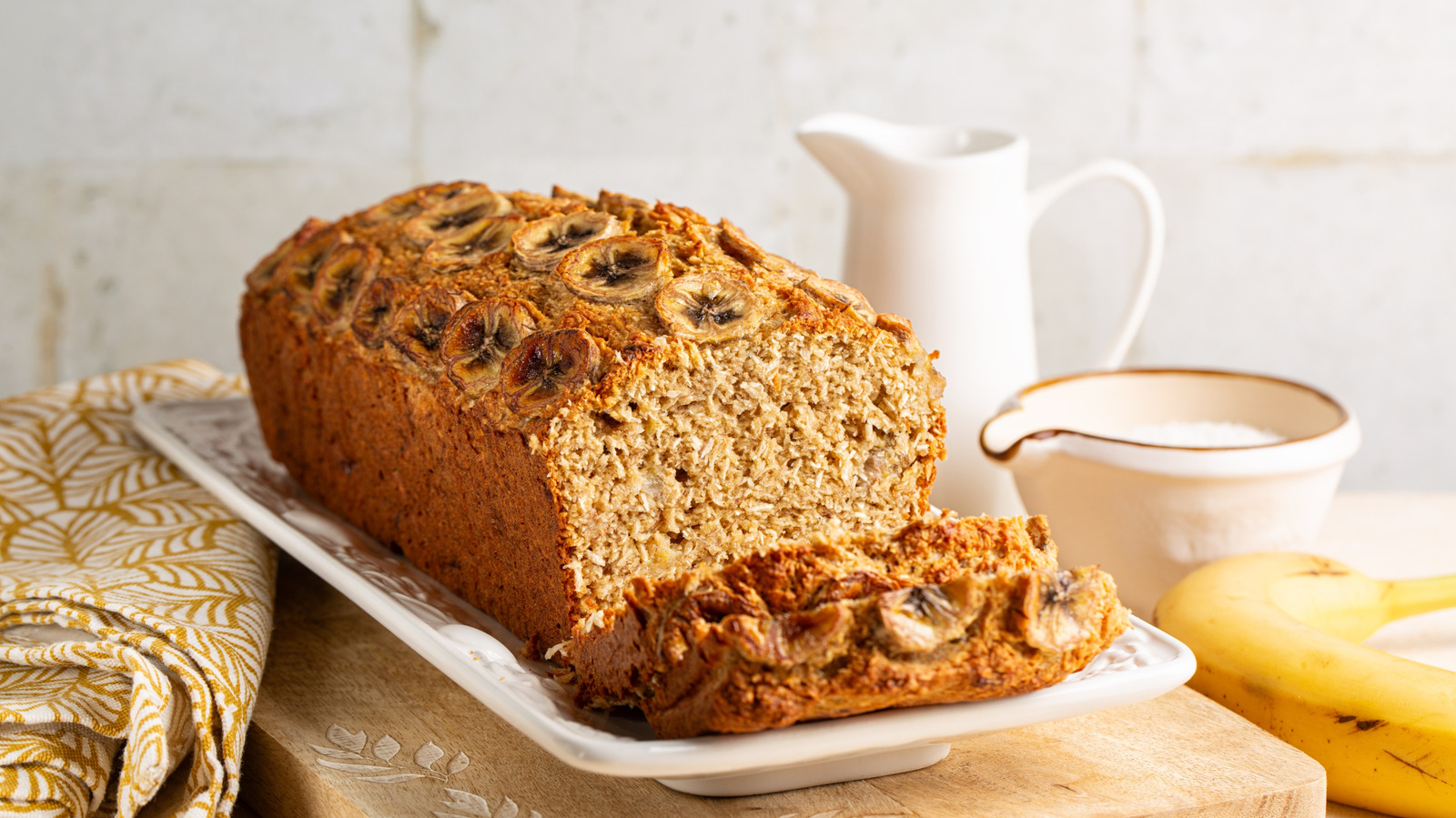The world of gluten-free baking is extensive, but it still takes trial and error to get things right every time. Each treat is different, and nailing the correct ratio of flours for gluten-free almond coffee cake or blueberry muffins may not translate well to something like banana bread. To make your gluten-free journey a little easier, we got an expert to dish up the best flours to use for banana bread.
Gluten-free desserts have a reputation for being crumbly, which isn’t good news for banana bread. The treat is best with a tender crumb, which can be difficult to achieve with notoriously drying gluten-free flours. To mitigate this, pastry chef Alysha Dinatale of The Goddess and Grocer in Chicago, Illinois, opts for flours that boost the quick bread’s texture. “Banana bread should be soft, moist, and just a little dense — so I love using a blend of oat flour, almond flour, and tapioca starch,” she says.
Each flour brings something special into the mix, coming together to produce the perfect loaf of gluten-free banana bread. “The oat flour gives it that tender, cake-like crumb, the almond flour keeps it moist, and the tapioca starch binds it all together without making it heavy,” Dinatale explains. “It’s like the dream team of gluten-free banana bread.”
Use the right ratios for gluten-free banana bread
Like many gluten-free desserts, banana bread needs the proper mix of flours in order to get that soft, dense feel that Dinatale speaks of. Since the flours have differing properties, it’s important to use the proper amount of each when making banana bread otherwise you could end up with the wrong texture. Oat flour is absorbent, lending to the bread’s tender crumb. It also has a decent amount of protein that helps with the treat’s structure; however, using oat flour alone can make baked goods too chewy or delicate.
This is where almond flour comes in. It isn’t absorbent like oat flour, but it has a high fat content that will keep banana bread moist. Using almond flour alone can make baked treats too dense, so combining it with oat flour’s airiness makes for the perfect duo. Use an equal amount of almond and oat flour for balanced banana bread, or use slightly more oat flour for a softer crumb.
While almond and oat flour provide the moist tenderness, tapioca starch helps thicken the batter and bind everything together. It turns gummy when mixed with liquids, so it’s best to use a significantly smaller amount of it. In this gluten-free buckwheat banana bread recipe, 1⅓ cups of almond flour are used in conjunction with a ⅓ cup of tapioca starch to balance out the former’s heaviness and the latter’s sticky texture.






